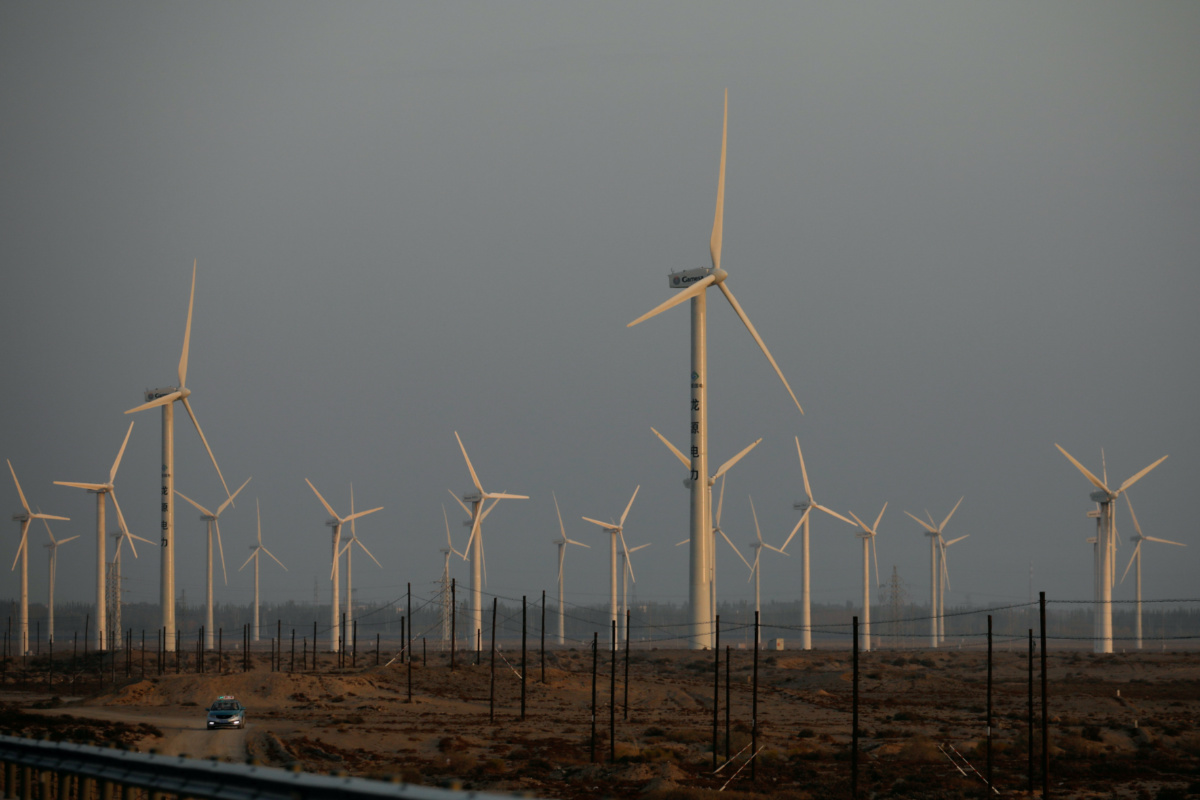London, UK
Reuters
Current commitments to cut greenhouse gas emissions put the planet on track for an average 2.7 degrees Celsius temperature rise this century, a United Nations report said on Tuesday, in another stark warning ahead of crunch climate talks.
Governments will be in the spotlight at the COP26 conference next week to meet a deadline of this year to commit to more ambitious cut pledges, in what could be the last chance to put the world on track to limiting warming to below 2C above pre-industrial levels and ideally to 1.5 degrees Celsius.

Icebergs are seen at the mouth of the Jakobshavn ice fjord near Ilulissat, Greenland, on 16th September. PICTURE: Reuters/Hannibal Hanschke.
As extreme weather events from wildfires to floods have hit countries around the world, a UN report in August warned that global warming due to greenhouse gas emissions could breach 1.5 degrees in the next two decades.
British Prime Minister Boris Johnson said on Monday it was “touch and go” whether the most important round of UN talks since the Paris Agreement in 2015 will secure the agreements needed to tackle climate change.
And the UN World Meteorological Organization said ahead of the two-week event that begins in Glasgow, Scotland, on Sunday that greenhouse gas concentrations hit a record last year and the world is “way off track” in capping rising temperatures.
The annual “emissions gap” report by the United Nations’ Environment Programme (UNEP), which measures the gap between anticipated emissions and those consistent with limiting the temperature rise this century as agreed in the Paris accord, said updated pledges only reduce forecast 2030 emissions by an additional 7.5 per cent, compared to the previous commitments.
If continued throughout this century, this would lead to warming of 2.7 degrees Celsius, slightly less than the three degrees Celsius UNEP forecast in its last report. A 30 per cent cut is needed to limit warming to tow degrees and a 55 per cent cut is needed to limit to 1.5 degrees.
It said current commitments to net zero could limit warming to around 2.2 degrees Celsius by the end of the century, but 2030 pledges so far do not put major emitters on a clear path to this.
As a group, G20 countries, which represent 80 per cent of global emissions, are not on track to achieve their original or new 2030 pledges.
“If there is no meaningful reduction of emissions in the next decade, we will have lost forever the possibility to reach 1.5 degrees,” UN Secretary General Antonio Guterres told a press briefing.
“It is absolutely essential that all G20 countries present before Glasgow or in Glasgow [pledges] that are compatible with 1.5 degrees Celsius,” he added.
The clock is ticking
Latest UN data shows 143 countries, accounting for around 57 per cent of global emissions, have submitted new or updated emissions cut plans ahead of COP26 and their total emissions are estimated to be around nine per cent of 2010 levels by 2030 if implemented fully.
But if all pledges by 192 countries under the Paris Agreement are taken together, an increase of around 16 per cent in global emissions is expected by 2030 compared to 2010, which would lead to warming of around 2.7 degrees Celsius.
China and India, which are together responsible for around 30 per cent of global emissions, have not yet made enhanced pledges.

A car drives near wind turbines on a power station near Yumen, Gansu province, China, on 29th September, 2020. PICTURE: Reuters/Carlos Garcia Rawlins/File photo.
Over the last 11 years, policies have been put in place which will lower annual emissions by 11 gigatonnes of CO2 equivalent by 2030, compared to what would have happened without these policies, the report said.
However, fossil fuel production is not slowing at the rate needed, with major economies set to produce more than double the amount of coal, oil and gas in 2030 than is consistent with meeting climate goals.
“On current progress, we’ll close the 2030 emissions gap sometime in the 2080s,” Myles Allen, professor of geosystem science at the University of Oxford, who was not involved in the report, said.
By 2030, to reach the 1.5 degrees Celsius limit, annual greenhouse gas emissions need to fall by an extra 28 Gt, or be halved from current levels of nearly 60 Gt, over and above what is promised in updated pledges and other 2030 commitments, UNEP said.
For the two degrees Celsius limit, an additional 13 Gt cut in annual emissions is needed by 2030.
“We have eight years to make the plans, put in place the policies, implement them and ultimately deliver the cuts,” UNEP executive director Inger Andersen said.
“The clock is ticking loudly.”
– Additional reporting by EMMA FARGE in Geneva, Switzerland.






